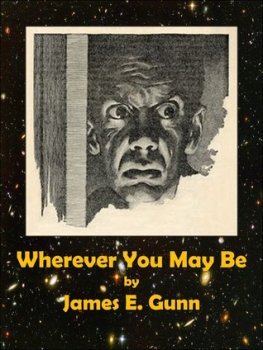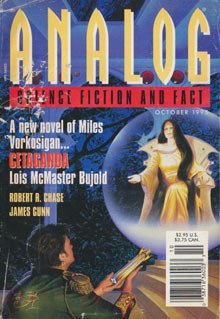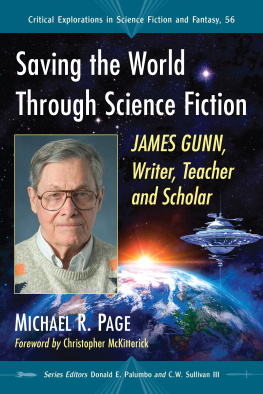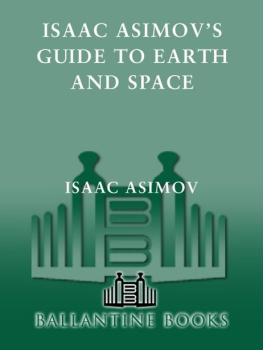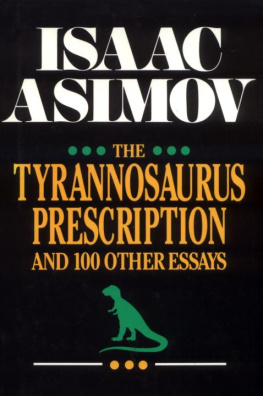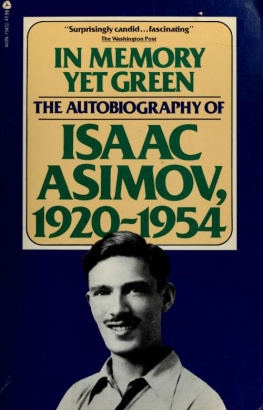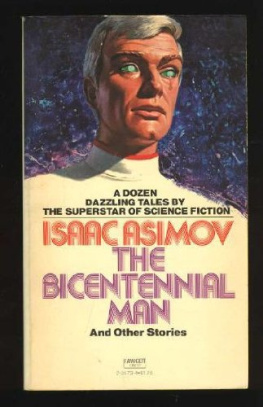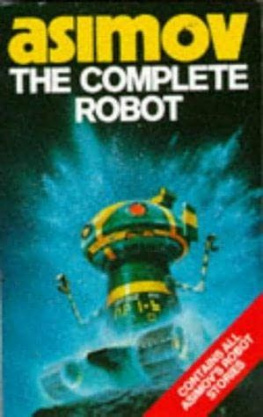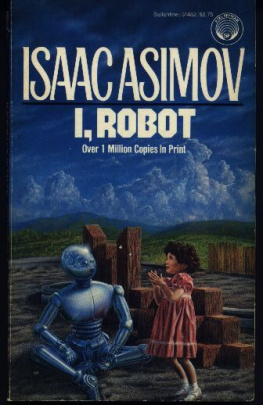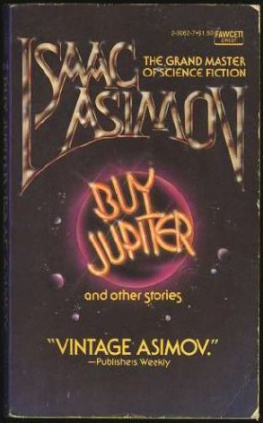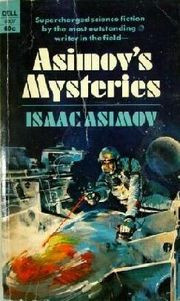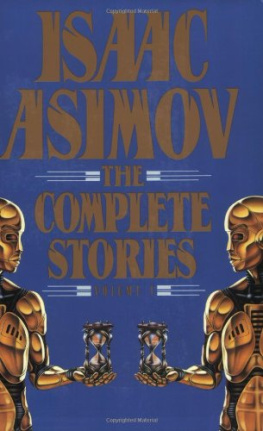5 The Robot Novels
In the period between the publication of Asimov's first novel in 1950 and his leaving the teaching position at Boston University in 1958 for the full-time writing of non-fiction, Asimov's science-fiction writing reached a high point of skill and significance that culminated in The Caves of Steel and The Naked Sun. These two novels form another series that deserves separate consideration from that of the unconnected novels in Chapter 6.
The Caves of Steel was serialized in Galaxy in 1953, published in hardcover by Doubleday in 1954, and published in paperback by New American Library in 1955; The Naked Sun was serialized in Astounding in 1956, published in hardcover by Doubleday in 1957, and published in paperback by Bantam Books in 1958. They were brought together in the hardcover edition with The Rest of the Robots published by Doubleday in 1964. In 1972 they were published by Doubleday in one volume under the title by which they are better known, The Robot Novels. Asimov, however, calls them "science fiction mysteries." Whatever they are called, they represent Asimov at the peak of his science-fiction powers.
Asimov agreed with that judgment, in almost those exact terms, when he discussed The Caves of Steel in Chapter 55 of Part I of his autobiography, In Memory Yet Green. Chapter 55 itself is titled "Science Fiction at Its Peak," and Asimov wrote:
I was very proud of the stories I was writing now [1953]. It seemed to me that they were much more deftly written than my stories of the 1940s. I think so to this day.
It seems to me that most people associate me with the 1940s and think of the positronic robot stories, the Foundation series, and, of course, "Nightfall," as the stories of my peak period. I think they're all wrong. I think my peak period came later in 1953 and the years immediately following.
By now, after all, the pulpishness in my writing had completely disap peared. That had been taking place all along, through the 1940s, but between what Walter Bradbury taught me and what I had learned at Breadloaf, the change accelerated under my own deliberate prodding.
My writing became ever more direct and spare, and I think it was The Caves of Steel that lifted me a notch higher in my own estimation. I used it as a model for myself thereafter, and it was to be decades before I surpassed that book in my own eyes.
What had brought Asimov's capabilities to fruition? Partly, one can guess, experience. Asimov had been writing science fiction for fifteen years and getting it published for fourteen when he began work on The Caves of Steel. Some writers, such as Edgar Rice Burroughs and A. E. van Vogt, begin writing at the top of their form and never do it much differently; others, like Robert A. Heinlein and Theodore Sturgeon, continue to improve until they attain full command of their writing skills and creative drives. For writers like the latter, the process seems to take about ten years, depending perhaps upon the age at which the writer begins to publish and the amount of writing done. Heinlein, for instance, started writing in 1939 at the age of thirty-two and came into his mature period in 1949. The first adult novel in which he demonstrated his integrated abilities, The Puppet Masters, was published in 1951 (two years before The Caves of Steel was serialized in Galaxy). Asimov, who was only eighteen when he went to see John Campbell for the first time and nineteen when his first story was published, was thirty-three when he began writing The Caves of Steel.
Asimov also had gained confidence as he matured. He had become a successful author in many ways. Instead of creeping "pallid and frightened" into Campbell's office, he now was able to breeze into the office of any science-fiction editor in New York and "expect to be treated as a celebrity." His science fiction was beginning to appear in books with regularity, and he had some assurance that every novel he wrote would be published as a book. I, Robot and Pebble in the Sky had been published in 1950; Foundation and The Stars, Like Dust, in 1951; Foundation and Empire and The Currents of Space, in 1952 two books a year, alternating between Doubleday and Gnome Press. And his Lucky Starr juvenile novels, written under the pseudonym Paul French, were beginning to appear from Doubleday, starting with David Starr: Space Ranger in 1952. Second Foundation and Lucky Starr and the Pirates of the Asteroids were in the works for 1953. His first scientific book, Biochemistry and Human Metabolism, which was neither particularly satisfying (because it was a collaboration) nor particularly successful (but showed Asimov the possibilities of science writing), had been published by Williams & Wilkins in 1952. Asimov also had completed a non-fiction book on his own, first called The Puzzle of Life and then The Chemistry of Life. Two publishers had rejected it, but he knew now that he could write nonfiction, and another publisher had approached him to do a book about science for teenagers.
Asimov had gained confidence in worldly ways as well. He had been promoted to assistant professor at the Boston University School of Medicine at the end of 1951, and he was beginning to think of himself as a writer rather than the research chemist he had considered himself for the last dozen years. He had earned $1,695 from his writing in 1949, more than $4,700 in 1950, $3,625 in 1951, and "an astonishing" $8,550 in 1952, the last amount being half again as large as his university salary, now $5,500. He had $16,000 in the bank; he owned his own car; and he and his wife were thinking about buying a house. They had a son, two years old.
He had matured in other ways. His social insecurity, particularly with women, had eased with success, and he had adopted a good-humoredly "gallant" approach to all women of all ages. He had even enjoyed his first extra-marital encounter and felt he had acquitted himself well.
What novel was the focus of all these maturing influences?
The Caves of Steel is placed in a time about three thousand years in the future. Earth is a homogeneous society of eight billion people who live in Cities with populations of twenty million or more. The open country outside the Cities is given over to agriculture and mining, performed entirely by robots. Earthmen, as Asimov calls them, have worked out efficient systems of living and supplying the necessities of life and accommodating themselves to the pressures of everyday existence. On fifty other inhabited planets, however, live the Spacers, once settlers from Earth but now quite different from Earthmen: the Spacers have normal lifespans of up to 350 years, are free from infectious diseases, control their births not only in quantity but in quality, and, though few in number, are militarily powerful because they have many machines and robots and depend upon interstellar travel. Upon previous occasions they have sent down their "gleaming cruisers from outer space" into Washington, New York, and Moscow to collect what they claimed was theirs. They have constructed a "Spacetown" adjacent to New York. In Spacetown, a Spacer has been murdered. The plot revolves around the investigation of that murder by Elijah ("Lije") Baley, a detective on the New York City police force with a C-5 rating, who is forced by the Spacers to accept as a partner a humanoid robot, R. Daneel Olivaw.
The novel was based on an idea suggested by Horace Gold. Gold had serialized The Stars, Like Dust ( Tyrann ) beginning in the fourth issue of Galaxy. Campbell, however, had published



